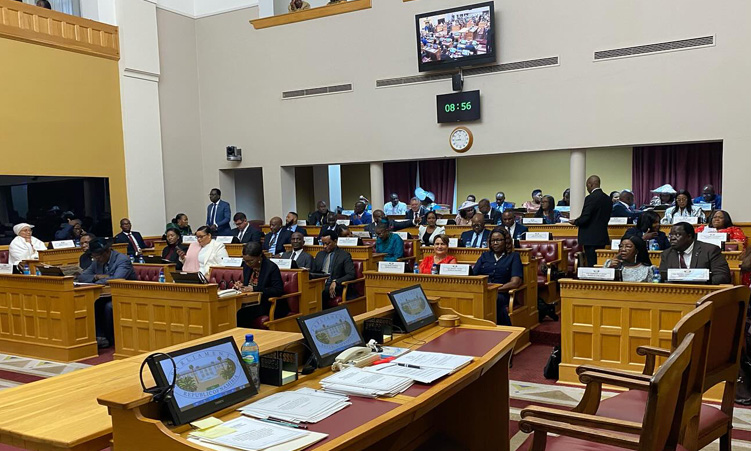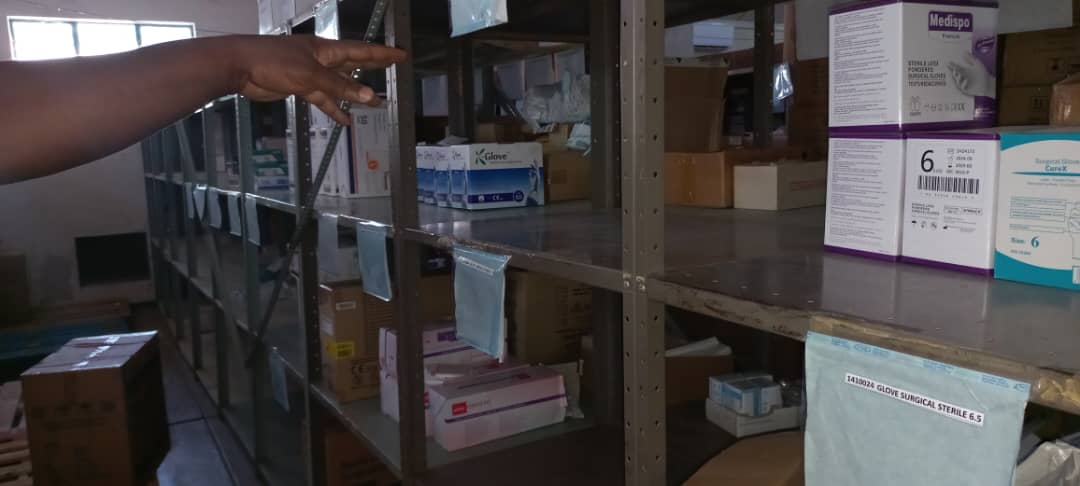RAMATEX wasn’t ‘scared away’. It went of its own volition.
The much-vaunted investment which promised to bring much to Namibian economic growth in terms of employment creation, skills development and foreign exchange earnings, in the words of the City of Windhoek, has now finally closed its doors and the last of its formerly 8 000 labour force are now unemployed. So ends the era of Ramatex.What are we left with? Who’s to blame? And how can we prevent this sad experiment from happening again? It started up in 2002, after the Ministry of Trade and Industry trumpeted in 2001 that it had snatched up the estimated N$1-billion project ahead of Madagascar and South Africa, largely because they offered larger than normal concessions offered to other Export Processing Zone (EPZ) companies, in the words of Herbert Jauch of LaRRI in a publication entitled ‘Textile and Clothing Industry of Southern Africa’ and published by the Friedrich Ebert Stiftung.Part of their incentive package had included subsidised water and electricity, a 99-year tax exemption on land use as well as over N$100 million to prepare the site including electricity, water and sewage infrastructure.This was justified at the time on the grounds of fairly significant job creation.Ramatex and its four subsidiaries were then duly set up, despite already emerging concerns on the part of a number of people and organisations, including the media.Expectations were high, and the City of Windhoek lauded the project: not only would it create thousands of jobs for the historically disadvantaged, but would also provide training, advantage the construction industry and transport sectors as well as small business development, increased tax revenue – the list goes on.Said the City of the project it claims a key stake in realising, in a published article entitled ‘Ramatex Investment Project in the City of Windhoek’: “It is therefore a vital essence of economic development characterised by rapid and efficient transfer of required skills across borders.Ramatex multi-million in investment therefore remains among the most effective ones in the fight against unemployment and poverty”.It also invested over N$60 million in the development of the 65-hectare Ramatex site, seeing Ramatex as only the first step to achieving what they described to be the future ‘hub for the textile industry’.Five years later, the whole Ramatex project has bombed and the City of Windhoek’s “milestone in overseeing the establishment of southern Africa’s largest textile manufacturing industry” (in their own words) has come to nought.All the concerns expressed over the years by the media, the unions, environmental groups and others about poor labour conditions at the plant, the environmental hazards, the financial infusions of Government and the City of Windhoek, so eager were they to attract said investment, have come prophetically true.Described at the time as alleged tactics to ‘scare away’ the investors, even though the concerns were about legitimate issues of labour exploitation and pollution of our environment, Government and the City of Windhoek surely now have to acknowledge that mistakes have been made and that the huge expectations they whipped up about the investment, and what it could and would do for Namibia, have been thoroughly dashed.’Financial troubles’ is the official version of why the plant has finally closed down, but this doesn’t address the concerns of the last 3 000 workers who have now been laid off with the ‘promise’ of redundancy packages.It also brings into question, if the company has been struggling over a few years, why our Government threw good money after bad in trying to rescue the project, to no avail in the long run.LaRRI, among others including this newspaper, has long urged that Namibia’s EPZ policy be reviewed to ensure policy results in investments that would promote socio-economic development in Namibia instead of draining national resources.It also urged environmental impact assessment studies on possible environmental threats and how they could be prevented; and it also urged a review of contracts and labour policies to bring Ramatex in line with Namibian laws and standards.The authorities overall did not lend a sympathetic ear to these concerns.And now, unfortunately, it is a case of another much-touted foreign investment gone bad – and a lot of money and jobs with it.Government and the City of Windhoek need to account.So ends the era of Ramatex.What are we left with? Who’s to blame? And how can we prevent this sad experiment from happening again? It started up in 2002, after the Ministry of Trade and Industry trumpeted in 2001 that it had snatched up the estimated N$1-billion project ahead of Madagascar and South Africa, largely because they offered larger than normal concessions offered to other Export Processing Zone (EPZ) companies, in the words of Herbert Jauch of LaRRI in a publication entitled ‘Textile and Clothing Industry of Southern Africa’ and published by the Friedrich Ebert Stiftung.Part of their incentive package had included subsidised water and electricity, a 99-year tax exemption on land use as well as over N$100 million to prepare the site including electricity, water and sewage infrastructure.This was justified at the time on the grounds of fairly significant job creation.Ramatex and its four subsidiaries were then duly set up, despite already emerging concerns on the part of a number of people and organisations, including the media.Expectations were high, and the City of Windhoek lauded the project: not only would it create thousands of jobs for the historically disadvantaged, but would also provide training, advantage the construction industry and transport sectors as well as small business development, increased tax revenue – the list goes on.Said the City of the project it claims a key stake in realising, in a published article entitled ‘Ramatex Investment Project in the City of Windhoek’: “It is therefore a vital essence of economic development characterised by rapid and efficient transfer of required skills across borders.Ramatex multi-million in investment therefore remains among the most effective ones in the fight against unemployment and poverty”.It also invested over N$60 million in the development of the 65-hectare Ramatex site, seeing Ramatex as only the first step to achieving what they described to be the future ‘hub for the textile industry’.Five years later, the whole Ramatex project has bombed and the City of Windhoek’s “milestone in overseeing the establishment of southern Africa’s largest textile manufacturing industry” (in their own words) has come to nought.All the concerns expressed over the years by the media, the unions, environmental groups and others about poor labour conditions at the plant, the environmental hazards, the financial infusions of Government and the City of Windhoek, so eager were they to attract said investment, have come prophetically true.Described at the time as alleged tactics to ‘scare away’ the investors, even though the concerns were about legitimate issues of labour exploitation and pollution of our environment, Government and the City of Windhoek surely now have to acknowledge that mistakes have been made and that the huge expectations they whipped up about the investment, and what it could and would do for Namibia, have been thoroughly dashed.’Financial troubles’ is the official version of why the plant has finally closed down, but this doesn’t address the concerns of the last 3 000 workers who have now been laid off with the ‘promise’ of redundancy packages.It also brings into question, if the company has been struggling over a few years, why our Government threw good money after bad in trying to rescue the project, to no avail in the long run.LaRRI, among others including this newspaper, has long urged that Namibia’s EPZ policy be reviewed to ensure policy results in investments that would promote socio-economic development in Namibia instead of draining national resources.It also urged environmental impact assessment studies on possible environmental threats and how t
hey could be prevented; and it also urged a review of contracts and labour policies to bring Ramatex in line with Namibian laws and standards.The authorities overall did not lend a sympathetic ear to these concerns.And now, unfortunately, it is a case of another much-touted foreign investment gone bad – and a lot of money and jobs with it.Government and the City of Windhoek need to account.
Stay informed with The Namibian – your source for credible journalism. Get in-depth reporting and opinions for
only N$85 a month. Invest in journalism, invest in democracy –
Subscribe Now!










